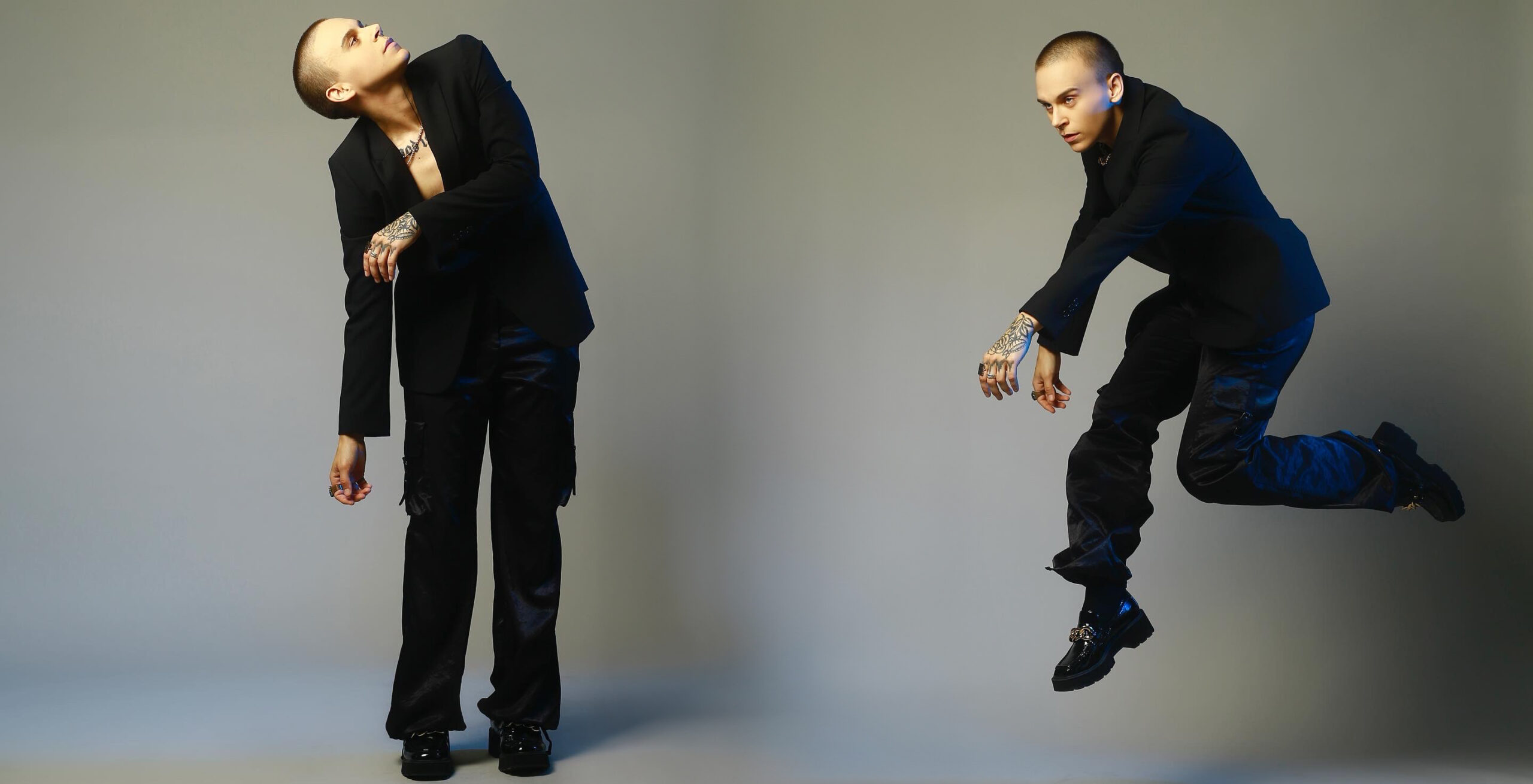
For choreographer and dancer Hayden Frederick, there was no escaping music growing up. Their family was full of musicians, and Frederick, who started taking voice lessons young, had their sights set on a music career. But when it came to performing, they struggled with stage fright. So, to help mitigate their anxiety, their mom enrolled them in a dance class.
Dancing soothed their stage fright, but it also did much more: “It unexpectedly ignited this exploding passion for dance. I was now also experiencing music with movement,” says Frederick. “I felt like my whole world changed when that began to happen.”
Years later, Frederick shares their passion for movement in some of the hottest dance studios, teaching contemporary fusion classes at Millennium Dance Complex in Los Angeles and Broadway Dance Center in New York City. Whether teaching a drop-in class at a studio or to a mass of students at a convention, Frederick strives to create a safe space to help dancers access authentic emotions and musicality.
Collaborating With the Music
Frederick’s choreographic process often starts by listening and moving to a song on repeat. “I’ll try to start by looking at what is activating within me. I’ll close my eyes and allow myself to be fully immersed and experience those feelings that are coming up,” they say. “Then I’ll start to freely move to the song for a while. And as I continue to do that, I feel the things in my body begin to coexist and intertwine with the music in real time.”
Eventually, phrases will start to take shape and become choreography, a word that Frederick personally doesn’t think sums up the complete, spiritual experience of creating movement.
While Frederick’s choreography comes from a deep, intrinsic place, they explain that they feel strange calling that entire experience theirs. “It’s all inherently in collaboration with music and the musicians who created it,” they say. “Just by teaching what you’re teaching, you are collaborating with a musician who created this music.”
In the past, Frederick shares, they struggled to fully access their authentic musicality. “There was a block preventing me from dropping into my body and accessing exactly how the music or the lyrics are hitting me and what is being activated by that,” they say. For them, overcoming this block was a matter of reclaiming their body—as well as feeling comfortable and safe in their body—through gender-affirming top surgery. “I can access and express vulnerable movement because I feel safer and more comfortable in my body,” says Frederick.

Encouraging Unique Musicality in Class
To help dancers find their musicality, Frederick acknowledges the importance of creating a safe space for dancers. “I try to encourage vulnerability in a way that feels safe because that’s a really difficult thing. And I think we forget how hard that is.”
And with this safe space, Frederick makes it clear that perfection is not the goal. “It’s an interesting concept to me to teach people the movement that comes out of my body that’s derived from things I’ve experienced in my actual life and the way my body is relating to music, and then to be adamant about people perfecting that experience,” says Frederick, “that doesn’t align with what I hope to offer people.”
They continue, “There’s no right or wrong or better or worse, there’s just lots of different connections to dance and music. And I think it’s really beautiful that we’re all so different.”
Hayden Frederick created a playlist for Dance Teacher+ of their favorite songs that they’ve choreographed to, and you can read below some descriptions behind why some of the songs mean so much to Frederick.
“Garden Song,” by Phoebe Bridgers
“Phoebe is one of my favorite music artists to choreograph and move to. I’m deeply inspired by Phoebe, first and foremost, as a human. Nothing about her as an artist or what she creates panders to the masses. It’s all so raw and honest. In an interview about this specific song, she said a lot of her lyrics are actual events stored in her brain. Her lyrics activate so many things and events stored in my own brain that I am then able to actualize them via movement.”
“Slack Jaw,” by Sylvan Esso
“Sylvan Esso [Amelia Meath and Nick Sanborn] has propelled my movement and choreography for years. This particular song has lived in my body for a long time. Amelia’s voice is inimitable and, alongside that, the lyrics and electronic elements in this song strike something deep within me. It is hauntingly powerful. Sylvan Esso said in an interview about ‘Slack Jaw’ in 2017, ‘Everything is awesome—and I am still sad.’ Those feel like accurate words for the things that come up for me when I move to this song. It is relative to my own personal experiences and also to a larger collective experience.”
“Love More,” by Sharon Van Etten
“Sharon’s music has traveled with me through many years. Both she and her music mean so much to me. I began to connect to her music during the pandemic, which was also during my physical transition as a trans person. For several years prior, I mostly danced to more masculine-sounding voices, as I was fighting this internal transphobic gender battle. After having gender-affirming top surgery, I was able to access completely new spaces within me and also the things in the shadows. Sharon’s music opened up a space for me to begin to reclaim my own femininity, among many other things, and that marked a moment in time when my movement changed profoundly. Her voice is unexplainably inimitable. Songwriting beyond bounds. ‘Love More’ was the first song of Sharon’s that I ever created to, and the feelings that come up are adjacent to how she spoke about the song in an interview: ‘ “Love More” is the most revealing song about one of the hardest times in my life and the mark of change.’ It most certainly is that for me as well.”





